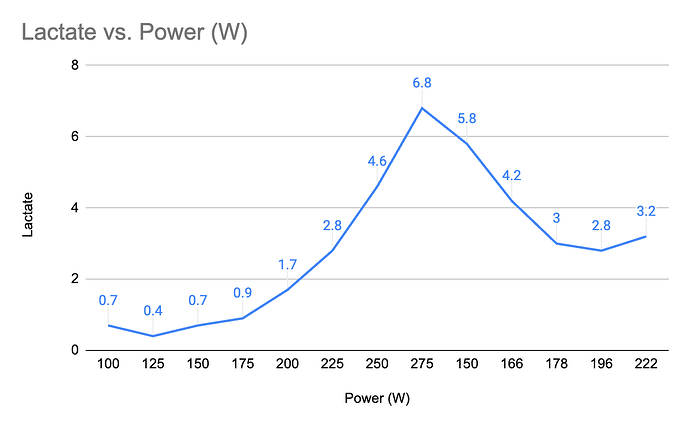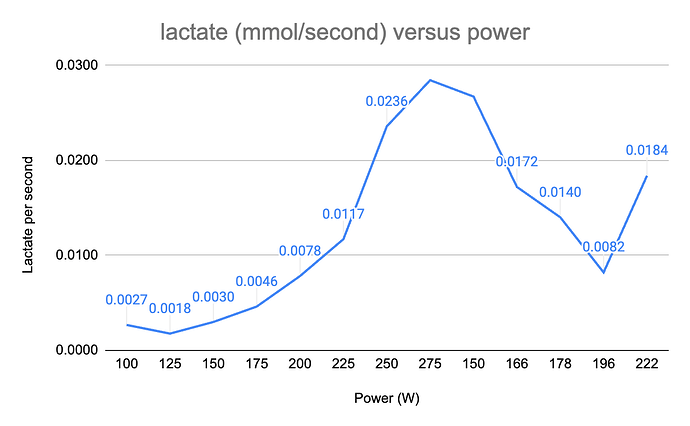Of interest, came out a few days ago
That is super interesting and reinforces my notion on the matter!
Yeah. I have the cheap one, Edge. By my understandment it’s just as “good” as more costly ones but it’s slower to get the results. I’ve done quite a bit of testing with it in measuring my aerobic threshold and the results always leave something to guess. Like article seems to say, they are fairly good at 4mM but below that they start to get inaccurate.
And then there is the daily variation, my resting lactate can be high or low and my lactate levels change over time at constant power output. Big part of the issue is not the device but mercurial nature of lactate.
Probably biggest waste of my money when it comes to training gadgets. The device itself is rather cheap but testing strips cost a lot and if i want to do good testing session it requires a lot of strips.
Isn‘t it like a power meter. Maybe not so important that they show the true value, but they deviation is constant?
Nah. Mainly because daily lactate values change a lot and seems that lactate also changes overtime in one training session. In that sense it’s more like heart rate, but with much bigger variation: There is just too much variation to nail something down. In my opinion.
Personally i was surprised how limited, and naive, understanding i had thru podcast- and coaching-scene when it comes to lactate testing when i started to do it myself. And seeing lots of videos of lactate testing and how poorly done lots of lactate tests are by athletes (=sit down and prick earlobe mid interval session by yourself). Even lab tests where one could see clear marks of sweat getting into sample thru highly elevated numbers.
Think it as a highly unreliable powermeter (maybe there is water in battery container for example) which gives you 1 second of power every 10 minutes or so. And you get to use it once a month. And each time you use it it costs you 30-60 bucks.
With continual testing thru out the day things would get (much) better. More data points, instead of training session here or there. Now it’s just blib in the radar while HR-monitors and power meters give daily data thru out training session.
@micomico I often see these studies and comments.
Below is some data from an athlete.
| Power (W) | Lactate | Step Duration |
|---|---|---|
| 100 | 0.7 | 4m21s |
| 125 | 0.4 | 3m46s |
| 150 | 0.7 | 3m54s |
| 175 | 0.9 | 3m15s |
| 200 | 1.7 | 3m37s |
| 225 | 2.8 | 3m59s |
| 250 | 4.6 | 3m15s |
| 275 | 6.8 | 3m59s |
| 150 | 5.8 | 3m37s |
| 166 | 4.2 | 4m4s |
| 178 | 3 | 3m34s |
| 196 | 2.8 | 5m41s |
| 222 | 3.2 | 2m54s |
If the lactate plus has a .2 mmol error, someone else can do the math on how this lactate test would change the design outcome of;
-
zones for training
-
how do we use the data to tell if the athlete is getting better? Aerobically? Or on the glycolytic side of things?
I have been measureing lactate for over 30 years…the error in getting usefull data is often on the side of the person taking the lactate.
Both biosen and ysi are better…yes…but are they better if you don’t have access to using one? or using one in the real world uphill against gravity and wind?
Also, if we stopped looking at absolute values of lactate, and looked deflection points of lactate we would all be better off.
Should this athlete train at 175 watts for the famous Zone 2 training ?
Or should they train at wattage that is relative to 2mmol for the famous zone 2 training?
So many people use different power meters on multiple bikes, with a 5-8% discrepancy, and they think that is okay. However, they complain about the accuracy of these lactate meters.

